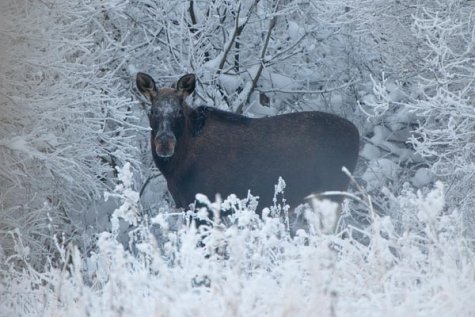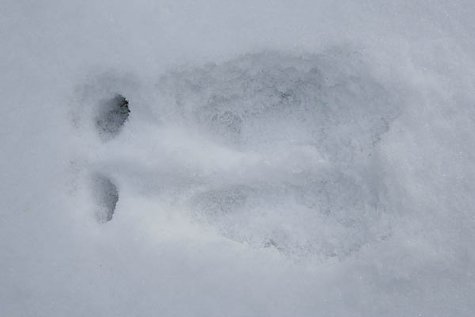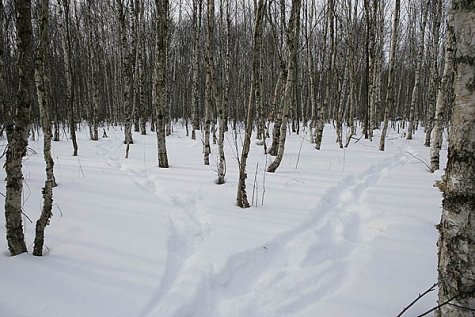Elk tracks in snow
Photos: Arne Ader
Translation: Liis
Elk
Elk; moose (US) Põder Alces alces
The elk is the largest animal in our forests. A fully grown elk bull stands just under 2 metres at shoulder height, length 3 metres and weight up to six hundred kilos – impressive. Elk bulls begin to shed their antlers towards the end of November, but it should be no surprise if some young animals still have their "spikes“ on. The number of elks is estimated at ten thousand individuals or more in Estonia.
Elks spend the winter in somewhat drier and higher situated forests where they move during the day, in turns feeding and resting. The most common group is a cow with one or two calves that follow the female, learning about life as well as winter feeding. These big animals have no food worries, the diet consists of twigs and tree bark and about 15 kilos per day are consumed by a fully grown animal.
Elk footprint
The tracks of such a big animal cannot be confused with any other animal. For a mature animal they are 12-16 centimetres long and in the tracks of the forefeet the imprints of the hoofs show too. The hind foot steps nearly in the print of the forefoot or stays just a little behind. Often a double line is drawn on the snow with the hoof tips. Moving calmly the stride length is up to a metre, at gallop up to three metres. In deep snow the elk doesn’t bother to lift its feet, and then we see a “plough furrow”. An elk moving at speed in snow is a magnificent sight.
Elk paths in bog birch forest. Ristsaare, Alam-Pedja











